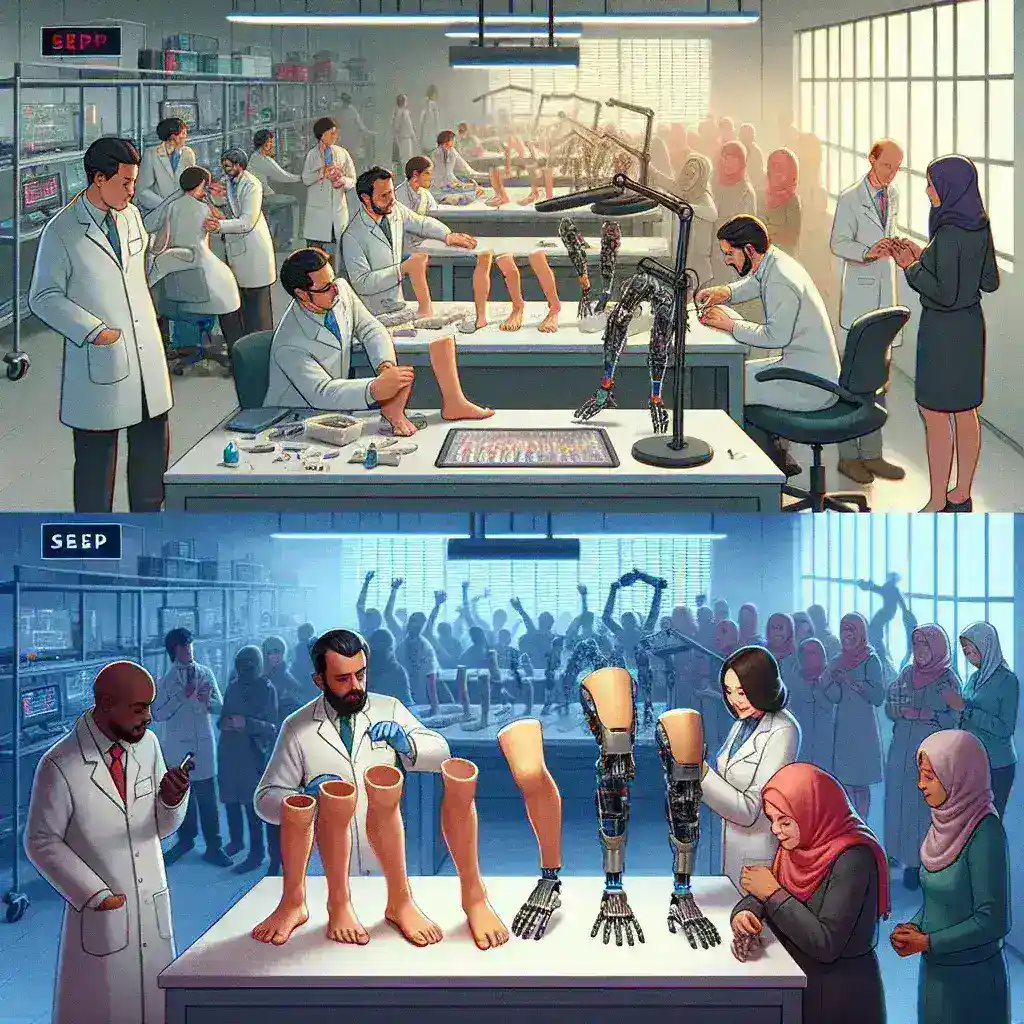Revolutionizing Mobility: MIT’s Latest Innovations in Prosthetics
This September, the Massachusetts Institute of Technology (MIT) is set to unveil a series of cutting-edge prototypes that promise to redefine the landscape of prosthetic limbs. With a burgeoning focus on artificial intelligence (AI), these innovations are not only aimed at enhancing mobility but are also designed to provide users with a more natural and intuitive experience.
The Intersection of AI and Prosthetics
As technology continues to evolve at a rapid pace, the integration of AI into prosthetic design is becoming increasingly significant. MIT scientists have harnessed machine learning algorithms to create prosthetics that can adapt to the user’s movements and environment. This adaptability represents a monumental leap from conventional prosthetics, which often rely on basic mechanical principles.
Understanding the Technology Behind AI-Driven Prosthetics
The AI-driven prosthetic limbs showcased this September utilize a combination of sensors, motors, and advanced algorithms. These components work together to interpret the user’s intentions and adjust the limb’s movements accordingly. Here’s how:
- Sensors: Integrated sensors monitor muscle signals, motion, and environmental factors.
- Machine Learning: The system learns from the user’s movements, adapting in real-time to ensure fluid motion.
- Feedback Mechanisms: Users receive haptic feedback, creating a more connected experience between the limb and the body.
A Brief Historical Context
The journey of prosthetic limbs has been a long one, dating back to ancient civilizations. Early prosthetics were rudimentary and primarily designed for basic functionality. However, as technology progressed, the focus shifted towards not only improving functionality but also ensuring that these devices became more user-friendly and adaptable. The introduction of AI marks a new chapter in this ongoing evolution.
The Importance of User-Centric Design
At the heart of MIT’s innovations is a commitment to user-centric design. Recognizing that each individual’s needs and experiences with prosthetics are unique, the research team has engaged with potential users throughout the development process. This collaboration has led to designs that prioritize comfort, usability, and aesthetic appeal.
The Potential Impact on Lives
The implications of AI-driven prosthetics extend far beyond mere functionality. For individuals with limb loss, these advancements can restore a sense of normalcy and independence. An MIT study revealed that 70% of users reported improved quality of life after transitioning to AI-enabled devices. This statistic underscores the transformative potential of embracing technology in healthcare.
Real-World Applications
During the showcase, attendees will have the opportunity to witness firsthand how these prototypes operate in controlled environments. From navigating obstacles to executing intricate movements, the demonstrations aim to highlight the real-world applicability of these innovations. For instance, participants may observe a prosthetic limb performing tasks such as:
- Picking Up Objects: Demonstrating fine motor control akin to that of a natural hand.
- Walking on Uneven Terrain: Adapting to changes in the ground surface in real-time.
- Social Interactions: Facilitating gestures that promote better communication and connectivity.
Future Predictions for AI in Prosthetics
The future of AI in prosthetics is promising, with several exciting predictions for its evolution:
- Increased Personalization: Future designs will allow for greater customization, tailoring limbs to fit each user’s lifestyle and preferences.
- Integration with Smart Devices: Prosthetics will likely connect with smartphones and smart home devices, enhancing usability and functionality.
- Broader Accessibility: As technology becomes more affordable, more individuals will gain access to advanced prosthetic solutions.
Expert Opinions on the Advancements
Leading experts in the field have expressed optimism regarding the direction of AI-driven prosthetic technology. Dr. Emily Chen, a biomechanical engineer at MIT, states, “The integration of AI into prosthetics is not just about improving functionality; it’s about restoring a sense of agency to individuals who have faced life-altering challenges.” This sentiment echoes the broader goals of creating an inclusive society where everyone can access the tools they need to thrive.
The Cultural Relevance of Prosthetics
Prosthetic limbs are more than just medical devices; they hold cultural significance as well. In many societies, the perception of disability is evolving, leading to greater acceptance and support for individuals using prosthetics. By showcasing innovative designs, MIT is playing a crucial role in normalizing the conversation around disability and technology.
Challenges Ahead
Despite the advancements being made, challenges remain. The high cost of research and development can hinder accessibility for many individuals who would benefit from these technologies. Furthermore, ethical considerations regarding AI’s role in healthcare must also be addressed to ensure that innovations are developed responsibly and equitably.
Conclusion: A New Era in Prosthetics
The upcoming showcase by MIT scientists is more than just a presentation of prototypes; it represents a pivotal moment in the evolution of prosthetic technology. As AI continues to drive innovation, the future looks bright for those who rely on these devices for mobility and independence. The commitment of researchers to user-centric design, combined with the potential for real-world applications, underscores a transformative era in healthcare.
For those interested in learning more about the event and the technologies being developed, stay tuned for updates as this September unfolds. The journey towards a more inclusive and technologically advanced future is just beginning.

